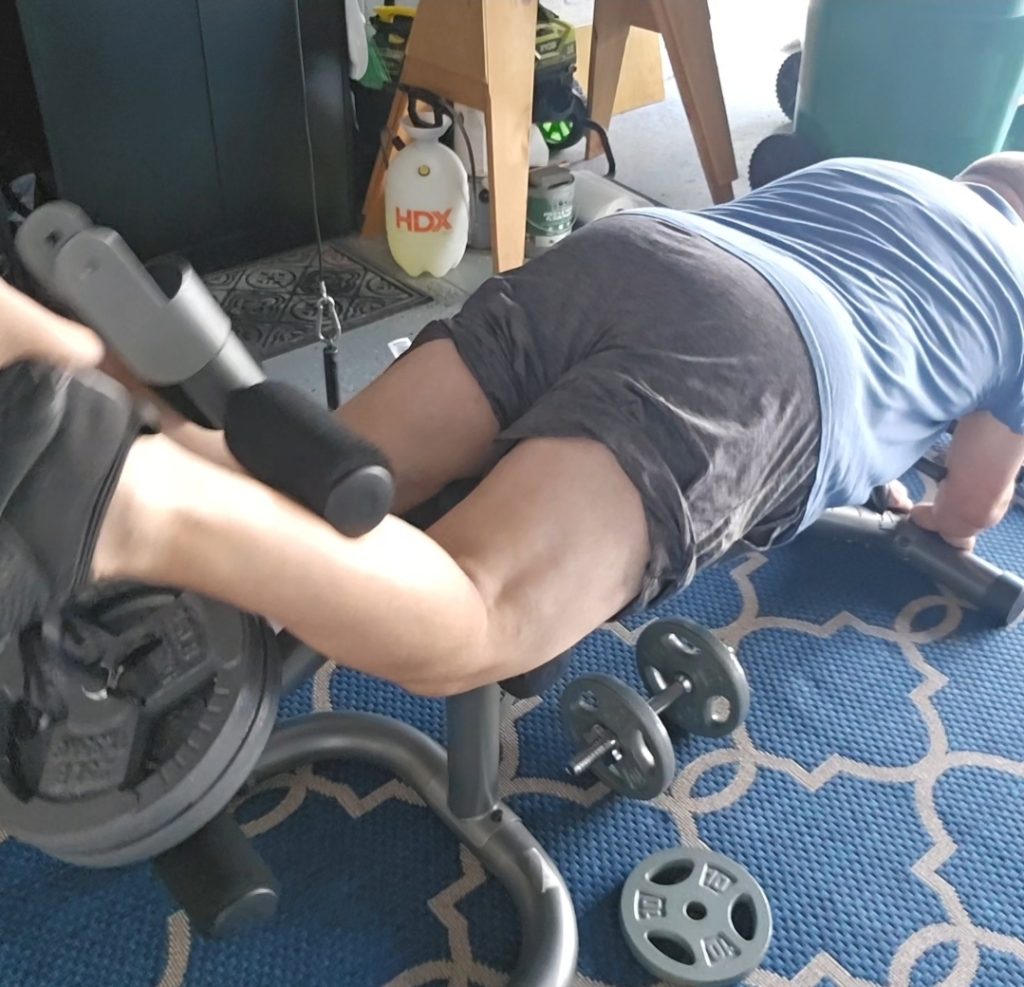Eighteen months ago, I underwent staged bilateral total knee replacements—a necessary decision after years of pain, limited movement, and the loss of a once-strong foundation. As someone with a lifelong commitment to martial arts and physical training, I expected to bounce back within a year. I trained hard, stayed consistent, and followed the protocols. But here I am—still stiff some mornings, still feeling pain after some workouts, and still rebuilding.
This article is for those of you over 50—or at any age—who’ve walked this path or are considering it. Maybe you’ve had a knee replaced. Maybe two. Maybe you’re still waiting, uncertain if strength and mobility can return. I’m here to say this: you can get strong again. You can rebuild—even at home. But it takes more time, more patience, and more heart than most expect.
The Reality of Recovery: What No One Tells You
The typical recovery timeline after total knee replacement often suggests that you’ll be “back to normal” by 12 months. For many of us, that’s not the case. Bilateral replacements, even staged, take a toll—not just physically, but mentally. I was surprised to find that at the 18-month mark, I still felt stiffness in both knees, especially in the morning and after sitting too long. My strength was returning, but slower than I expected. My range of motion was better than pre-surgery, but it wasn’t fluid.

What no one told me—at least not plainly—is that recovery after total knee replacement continues long after your surgeon says, “you’re healed.” Yes, the bones and implants may be solid. But the muscles? The connective tissue? The coordination? That’s your responsibility now. And if you’re over 50, it may take longer—but it will come.
Why I Chose to Train at Home—And Why You Can Too
Early in recovery, I realized that gyms and group classes weren’t the right environment for me. For one, the lightest weight on the machines was too heavy. I needed control. I needed focus. I needed safety. I needed to move at my own pace without feeling rushed or watched.
So, I built a modest home gym. My space isn’t flashy, but it’s functional:
A stationary bike for cardio and joint-friendly endurance work
Resistance bands and ankle weights for progressive strength
A weight bench with a leg extension/curl attachment for controlled quad and hamstring loading
A mirror for form feedback
Foam rollers and massage gun to ease post-workout tightness
Mats for stretching, balance, and floor work
A 14″ step to work on rebuilding strength stepping up and down
Training at home allows me to listen to my body. On days when stiffness limits me, I adapt. On strong days, I push further. It’s this self-regulated consistency that makes the difference.
My Weekly Leg Routine: Structure with Flexibility
No two days are exactly the same, but here’s the structure I follow:
Strength Training (2x per week)
Mobility & Warm-Ups
Dynamic stretches (leg swings, hip openers)
Light recumbent bike: 5–10 minutes to get blood flowing
Modified squats using dumbbells or an Open Trap Bar (light to moderate weight, high reps)
Leg Extensions and Leg Curls
Standing hamstring curls with resistance bands
Glute bridges and step-ups
Calf raises, seated calf raises
I keep movements slow, controlled, and within my pain-free range. When discomfort arises, I back off—not stop.
Aside from legs, I work the rest of my body as well, training Legs on Monday, Chest and Triceps on Tuesday, Wednesday off, Legs and Biceps Thursday, and Back and Triceps Friday.
Cardio (3x per week minimum) doing HIIT on the stationary bike
Outdoor walking 2+ miles
Balance & Core (2–3x per week)
Seated torso rotations and resistance band core pulls
On my off days I also train Karate, but slowly and carefully, relearning my body and adapting everything as I go.
Mental Training: The Hardest Part
Physical effort is measurable. Mental resilience? That’s trickier.
I’ve had weeks where I wondered if I’d plateaued—if the tightness in my knees would ever ease or if the strength in my legs would ever feel natural again. It’s easy to fall into self-doubt, especially when your peers seem to recover faster, or your timeline doesn’t match the textbook or what you expected.
But every time I step into my home gym, I remind myself:
This isn’t about what I used to lift. It’s about who I’m becoming.
I celebrate the small wins. A deeper squat. Less limping after a walk. No pain after standing to cook dinner. These moments build confidence, although it’s very frustrating.
Prayer and meditation help. But most of all, I keep a martial arts mindset: discipline over motivation. Show up even when you don’t feel like it. That’s how strength is rebuilt, and success is achieved.
What I Wish I Knew at 12 Months
If I could go back, here’s what I’d tell myself at the one-year mark:
Stiffness doesn’t mean failure—it’s part of adaptation
Strength will come back—but slowly, and it needs variety
Pain needs attention, not avoidance—modify, don’t quit
Recovery doesn’t end—it evolves
You are not behind—you’re still in the game
Final Thoughts: For Anyone Starting Late or Starting Over
If you’re over 50 and facing this mountain, know that you’re not alone. You’re not broken. You’re not “too old” to get strong again. Whether you’re just off the operating table or already back on your feet—every step, every rep, every session matters.
You won’t return to who you were.
You’ll become someone stronger. Someone who knows what it means to rebuild from the ground up.
You are the proof that healing is possible. One workout at a time. One day at a time. One strong leg at a time.
Remember, quitting is NOT an option.

